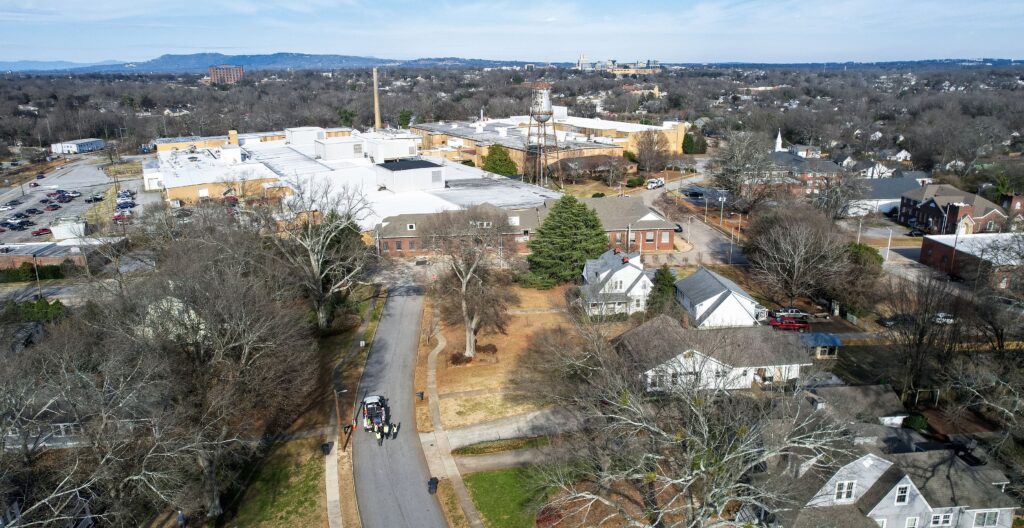- Dunean Mill was a model for modern manufacturing in the South when it opened in 1912.
- The Dunean Mill Village was one of the first to include modern infrastructure like sewers and running water.
- MetroConnects was recently awarded $10 million in SCIIP funds to replace and rehabilitate Dunean’s sewer system, which was installed beginning in the 1920s.
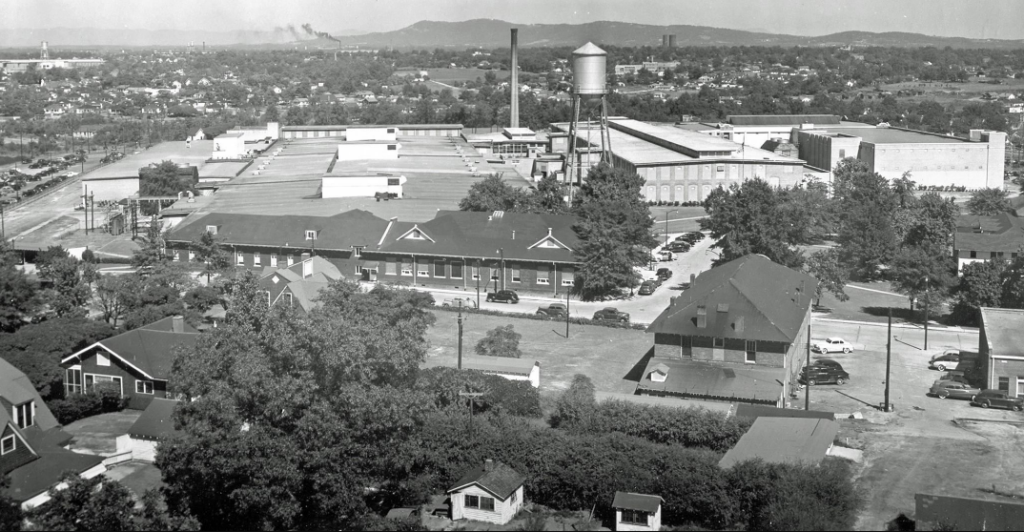
The Million Dollar Mill
From the beginning, Dunean Mill was known as “the million-dollar mill.” This is because its owner, Capt. Ellison Adger Smyth, envisioned the mill to be a modernized symbol of Greenville’s future as the “textile center of the world.” Built by J.E. Sirrine & Company, the mill was state-of-the-art when it began operating in 1912. It was one of the first to be run entirely by white coal electricity and became a model for modern mills throughout Greenville County and the South.
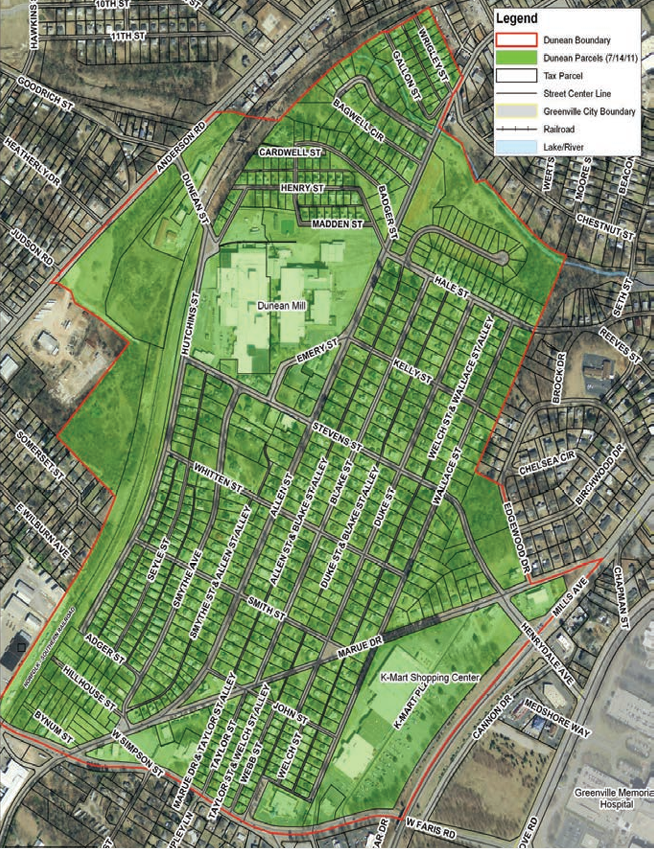
Dunean Mill was named after an Irish village where Smyth’s ancestors lived. It boasted 50,000 spindles and 1,200 looms when it first opened. Compared to Mills Mill, which opened with 8,000 spindles 15 years earlier, Dunean Mill was massive. The mill and its adjacent village took up 237 acres of land, spanning roughly the areas that are now bounded by the Norfolk Southern railroad line to the west, Mills Avenue to the east, W. Faris Road to the south, and Brushy Creek to the north. The Village included 180 homes when it first opened, along with a general store that also served as a church on Sundays.
Village Life
Like other mill operators at the time, Smyth was well aware that to keep a productive workforce meant to keep a satisfied workforce. The Dunean Mill Village was constructed with this in mind. By the 1920s, Smyth had built an additional 270 new houses and added sewer systems, electricity, and running water, which was unusual for mill villages at the time.
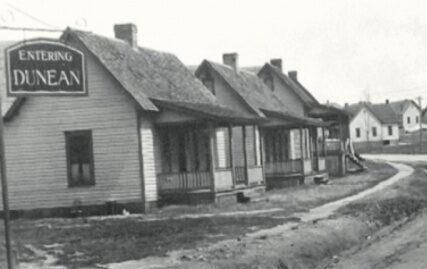 The mill also operated police services and recreational services, including the first YMCA in a mill community in South Carolina, which opened in 1919. The original Mill Store was located on Stevens Street, and provided most of the goods villagers needed, although it did so through a credit system in which some of the Villagers’ wages were paid through vouchers that could only be redeemed at the store. Stevens Street eventually became a hub for commerce, including a barber shop that opened in 1939 and still operates today.
The mill also operated police services and recreational services, including the first YMCA in a mill community in South Carolina, which opened in 1919. The original Mill Store was located on Stevens Street, and provided most of the goods villagers needed, although it did so through a credit system in which some of the Villagers’ wages were paid through vouchers that could only be redeemed at the store. Stevens Street eventually became a hub for commerce, including a barber shop that opened in 1939 and still operates today.
However, paradoxes such as the voucher system abounded throughout Dunean and other mill villages. While many appreciated the protection of the mill police and the convenience of mill stores, these conveniences also meant that mill supervisors could set prices and keep a close eye on their employees, controlling much of their daily lives. That said, many old-time residents and descendants of early village employees recall village life fondly. Several churches were built in the 1920s (with the ministers often paid by the mill and encouraged to speak highly of company interests), along with daycare facilities and a small school. In 1923, Smyth donated property to the new Parker District to build an elementary and middle school. Smyth’s Dunean Village, like Mills Mill Village, also participated in Textile League Baseball, with the “Dunean Dynamos” being cheered on by the local villagers.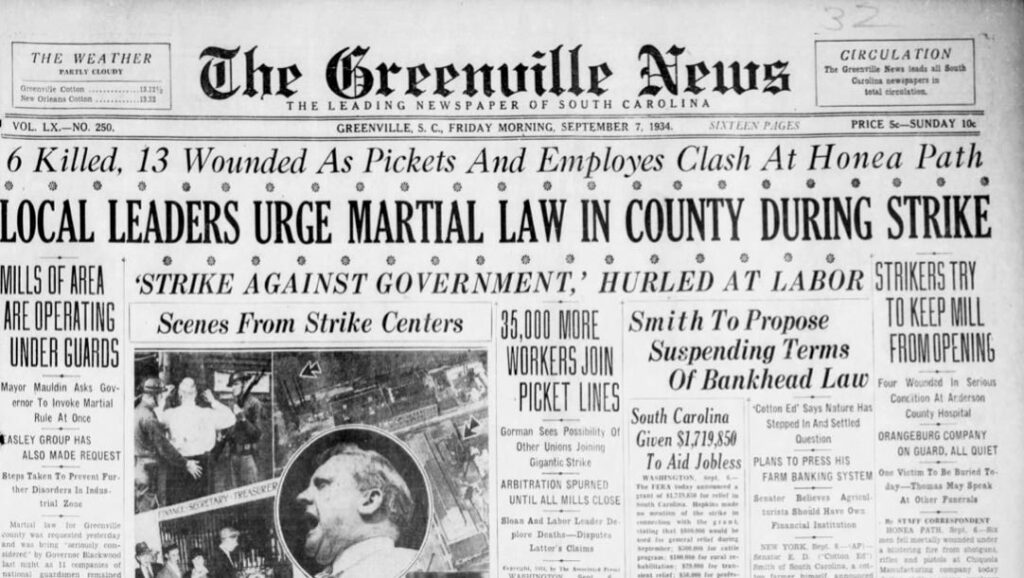
A Changing Community
Like other mills, Dunean Mill was not immune to the difficulties of the Great Depression. By the end of the 1920s, Smyth was reducing wages and instituting “stretched-out” workloads. In 1934, the United Textile Workers Union launched a strike at their southern headquarters. Governor Ibra Charles Blackwood ordered National Guardsmen to the Upstate mills. On the morning of September 6, as organizers, deputies, and workers gathered near Dunean’s gates, a deputy sheriff challenged a worker. The deputy fired on the worker, who then ran and was shot in the back. On the same day, seven strikers in Honea Path were also killed. The killings had a chilling effect on the strike, which soon collapsed.
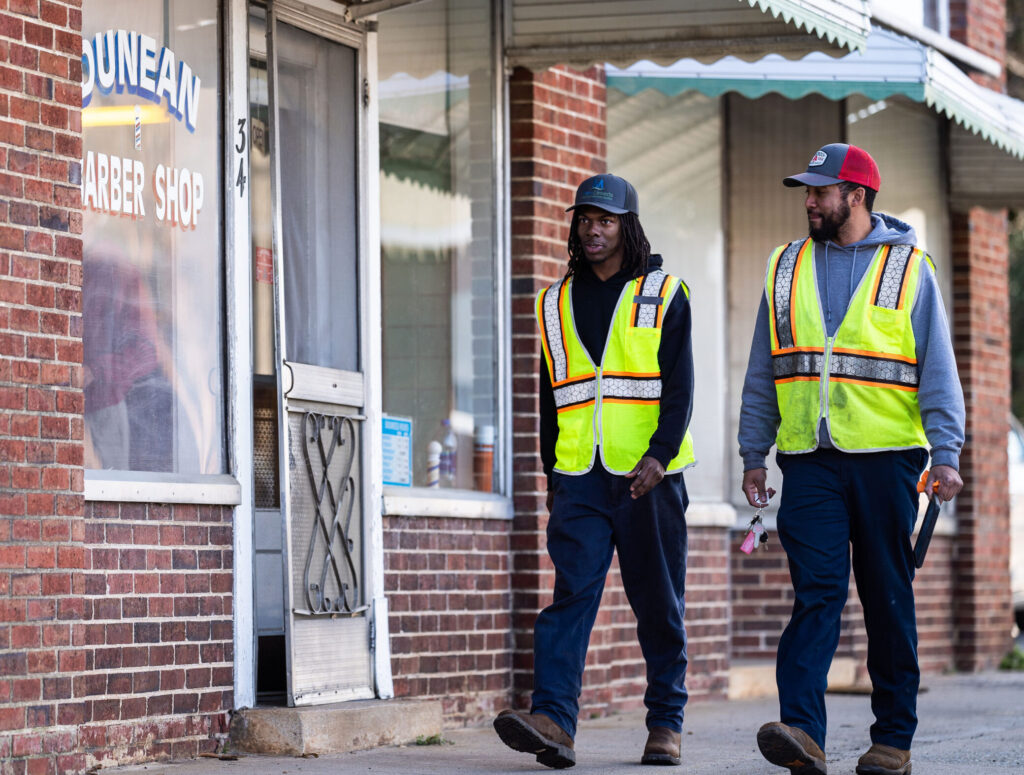 Twelve years later, in 1946, Smyth sold the Dunean Mill to J.P. Stevens, who began selling village homes to the workers. Becoming homeowners gave new autonomy to the workers. However, once mill owners were no longer responsible for the village homes, they ceased infrastructure upkeep. New Special Purpose Districts were created throughout South Carolina, including in Parker, where Dunean is located, to handle municipal services such as fire, police, and sewer. MetroConnects (known then as Metropolitan Sewer Subdistrict) was incorporated in 1969 to handle the sewer collection needs of several areas of unincorporated Greenville County, and in 2022, began servicing Parker and the Dunean Village area.
Twelve years later, in 1946, Smyth sold the Dunean Mill to J.P. Stevens, who began selling village homes to the workers. Becoming homeowners gave new autonomy to the workers. However, once mill owners were no longer responsible for the village homes, they ceased infrastructure upkeep. New Special Purpose Districts were created throughout South Carolina, including in Parker, where Dunean is located, to handle municipal services such as fire, police, and sewer. MetroConnects (known then as Metropolitan Sewer Subdistrict) was incorporated in 1969 to handle the sewer collection needs of several areas of unincorporated Greenville County, and in 2022, began servicing Parker and the Dunean Village area.
MetroConnects is excited to contribute to infrastructure improvement in the Dunean area. It is in the planning phases to begin rehabilitation and replacement of Dunean’s deteriorating sewer system, much of which is the original system that was installed by Smyth in 1912 and the 1920s. In April, MetroConnects was awarded a $10 million South Carolina Infrastructure Improvement Program (SCIIP) grant for the project, along with an additional $10 million SCIIP grant to do similar work in the Mills Mill Village area, and a $3 million grant from Greenville County County Council. All three grants come from federal funds allocated by the American Rescue Plan Act. Keep an eye out for Metro workers as they work to protect the environment and public health throughout the Dunean Village community.
